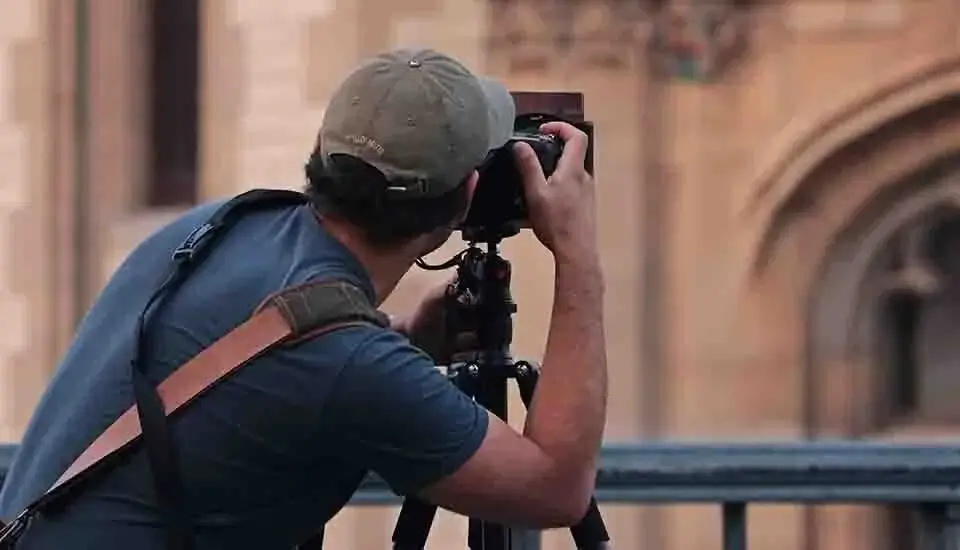Becoming a photographer takes time, effort, and dedication. In this guide, we’ll share practical tips to help you get started. While they won’t make you a pro overnight, they’ll definitely put you on the right path.
How to Start Your Journey in Photography
The most important step is simply to begin.
Start by reading your camera manual—either carry a hard copy or keep a PDF version on your phone. Then, explore some basic photography terms to understand your gear and concepts like ISO, shutter speed, and aperture.
After that, flip through your favorite photos. Make a note of your likes and dislikes about each one. To understand different types of photography, follow Clipping World or read guides on popular photography styles.
01. Take Lots of Photos and Start Experimenting

You don’t have to wait until you’re a technical expert. Start taking photos—even in auto mode—and learn as you go. Platforms like Digital Photography School offer free tips and techniques to practice with. Trial and error is your best teacher in the beginning.
02. Be Comfortable with Your Camera
Get to know your camera inside and out. Learn how to quickly adjust ISO settings and explore functions like bracketing, time-lapse, and exposure compensation. For in-depth gear tutorials, visit DPReview—a trusted site for camera reviews, sample shots, and comparisons.
Test your lens sharpness by shooting text (like a printed newspaper) and evaluating details at various apertures. Understanding the strengths and limits of your camera helps you use it more creatively.
03. Master the Fundamentals

Photography fundamentals include shutter speed, aperture, and ISO. These three pillars determine exposure and image quality. For a clear explanation, read this Beginner’s Guide to Exposure Triangle by Adobe.
Don’t forget to explore composition rules like the rule of thirds, leading lines, and framing. Tools like Canva’s Composition Tips can help you visualize them better.
04. Practice What You Learn
Turn theory into action. Use Aperture Priority Mode to experiment with depth of field, or try Manual Mode to control light and motion. Document what you learn. Tools like Notion or a simple photography journal can help you track progress and mistakes.
05. Master Lighting Skills

Photography literally means “drawing with light.” To master it, you must learn to handle both natural and artificial lighting. Learn how to use natural light in photography from B&H Explora. Then, move on to flash, reflectors, and softboxes.
Advanced photographers also experiment with off-camera lighting. You can start exploring with this beginner flash guide from Fstoppers.
06. Narrow Down Your Focus
Try different photography genres to find what excites you. Then, specialize.
Whether it’s weddings, real estate, or products, each niche has unique challenges and techniques. For example, product photographers must master lighting reflective surfaces, while wedding photographers deal with harsh sunlight and emotional timing.
07. Learn the Basics of Photo Editing

Editing is crucial. Shooting is only half the process. Tools like Adobe Lightroom and Photoshop give you control over color, tone, and clarity. Follow Adobe’s own Lightroom tutorials or explore beginner YouTube channels like Piximperfect.
If you’re short on time or want high-end edits, check out Clipping World’s Photo Editing Services.
08. Seek Out Feedback
Growth accelerates with feedback. Ask fellow photographers or join free groups like r/photography on Reddit or Flickr photography critique forums. Don’t take criticism personally. Learn to differentiate between subjective taste and helpful technique correction.
09. Never Stop Shooting

Even the best photographers never stop learning. When inspiration fades, try starting a 365 project (one photo a day), or work on themed challenges. Websites like Shotkit’s photo challenge list offer creative prompts to reignite your passion.
Conclusion: Becoming a Photographer
Becoming a great photographer doesn’t come from reading alone—it comes from doing. So, start shooting today. Learn, fail, improve, and repeat. Whether it’s portraits, products, or landscapes, your unique vision matters.
And if you ever need professional photo editing support, Clipping World is always here to help bring your work to the next level.
Frequently Asked Questions
Yes—it requires both artistic vision and business skills. You’ll need to shoot, edit, and market your work. Start slow and build up over time.
No, but it’s evolving. Today, competition is fierce, but quality work still stands out. Statista shows the global photography market is growing with demand in media, marketing, and e-commerce.
It depends. A degree gives you structured training, critiques, and networking opportunities. But many successful photographers are self-taught with online courses and portfolio-building.
A Bachelor of Fine Arts (BFA) in Photography or a BA in Visual Arts is often ideal, especially from a school with a strong creative program like Parsons or SCAD.

